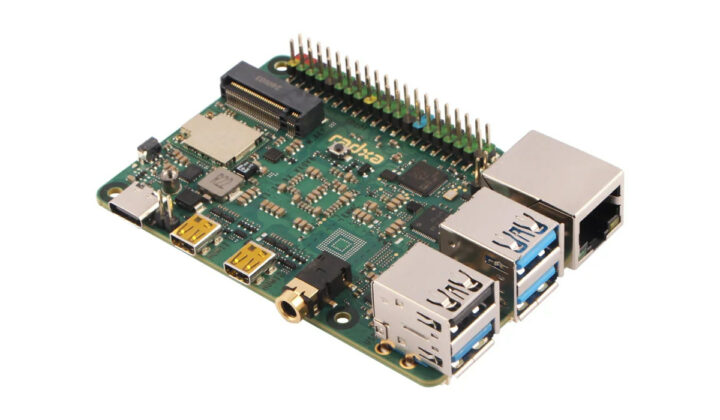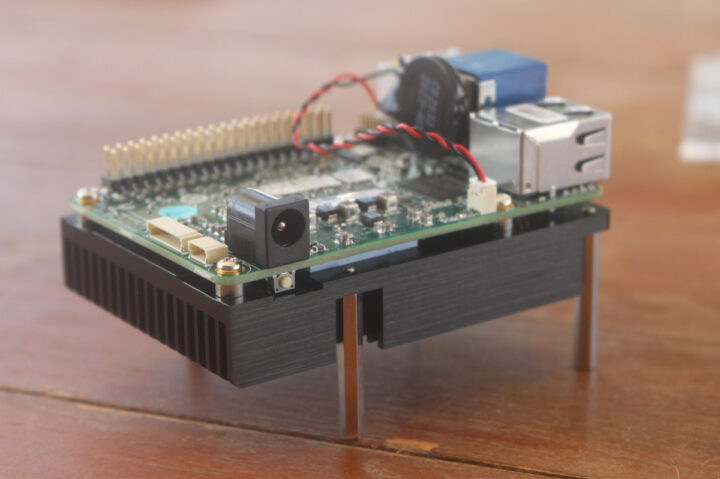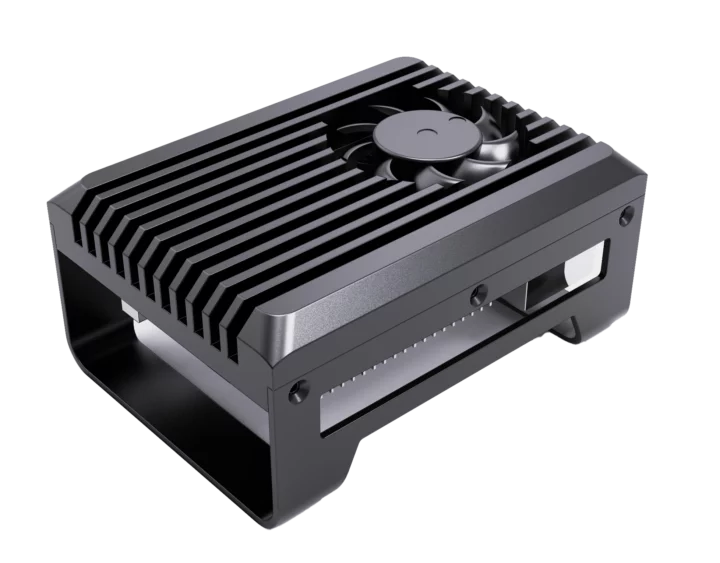This is pretty promising as a Raspberry Pi sized board that is x86/PC based. I have an old Pi 3B running my home PBX with a couple DIDs and VOIP trunks, but the OS and software is old and the Pi is not really supported for newer versions of Asterisk and FreePBX at the moment (There is Incredible PBX and doing things manually). Though I’d like to see a detailed review of installing and running GNU/Linux on the platform. But definitely something to keep an eye on. Also, by the time you buy accessories, you’re not far away from a cheap Beelink computer that will come with SSD, power supply and case; though Adam on the No Agenda Show has had a couple of the Beelink SSDs fail on him though I wonder if he’s regularly trimming the drives which could lead to issues especially since its heavily media based show production.
By Jean-Luc Aufranc
Radxa X4 is a credit card-sized Intel Processor N100 single board computer (SBC) that costs almost the same as a Raspberry Pi 5 with the 4GB RAM model going for about $60 and the 8GB RAM variant around $80.
The x86 SBC offers many of the same features as the Raspberry Pi 5 including dual micro HDMI output, four USB 3.2/2.0 ports, Ethernet and WiFi networking, and the 40-pin GPIO header handled through a Raspberry Pi RP2040 microcontroller. Networking is better with 2.5GbE and WiFi 6, M.2 SSD support is built-in and four to eight times faster compared to PCIe HAT for the Pi 5, and the USB 3.2 ports are capable of 10 Gbps speed. So let’s little not too like, and the main downside is the lack of MIPI CSI and DSI connectors for projects requiring those camera and display interfaces.

Radxa X4 specifications:
- SoC – Intel Processor N100 quad-core processor up to 3.4 GHz (Turbo) with 6MB cache, 24EU Intel HD graphics @ 750 MHz; TDP: 6W
- MCU – Raspberry Pi RP2040 dual-core Cortex-M0+ microcontroller with 264KB SRAM for I/O control
- System Memory – 4GB or 8GB LPDDR5 (16GB optional, but not offered for sale yet)
- Storage
- M.2 M-Key socket for M.2 2230 NVMe (PCIe Gen 3.0 x4) SSD tested up to 3,400 MB/s (Read) and 3,100 MB/s (Write).
- SPI flash for the BIOS/UEFI
- eMMC flash footprint
- Video Output – 2x micro HDMI 2.0 ports up to 4Kp60
- Audio – 3.5mm headphone jack with microphone input
- Networking
- 2.5GbE RJ45 port with PoE support through optional PoE HAT
- Wireless
- WiFi 5 & BT 5 for 4GB RAM model
- WiFi 6 & BT 5.2 for 8GB RAM or more models
- USB
- 3x USB 3.2 host ports (10 Gbps)
- 1x USB 2.0 host port (480 Mbps)
- Expansion – 40-pin GPIO header with
- Up to 2x SPI
- Up to 2x UART
- Up to 2x I2C
- Up to 16x PWM
- Up to 8x PIO(Programmable IO)
- 1 x 5V DC power in
- 2 x 3.3V power pin
- Mostly compatible with the 40-pin Raspberry Pi GPIO header
- Misc
- Power Button
- BOOTSEL Button for RP2040
- Fan Header
- RTC Header
- BIOS features – Auto power on, Wake-on-LAN, RTC-timed wakeup, PXE boot
- Power Supply
- 12V/2A (min) via USB Type-C port with PD support. 25W+ recommended when all USB 3.0 are used
- 12V via power input header
- Dimensions – 85 x 56x 20mm
- Temperature Range – 0°C to 60°C

Radxa says Windows 10/11 and Debian/Ubuntu Linux distributions are supported on the board, but I’d assume other OS might work too since it’s an x86 platform. A hardware access/control library for Linux will be provided, but I could not find it at this time. Documentation looks to be in work-in-progress, but you can already download a product brief, the PDF schematics, and the components placement map.
I reviewed the similar, but pricier industrial-grade AAEON UP 7000 SBC with Ubuntu 22.04 at the end of the last year and it worked great delivering better performance than the Raspberry Pi 5 in most cases and GPIO working fine. Cooling is definitely required though, and Radxa did not provide any information about cooling solutions for the X4 so far. For reference, the UP 7000 could run fanless with the large heatsink shown below, so I’d expect something similar to become available for the Radxa X4.

[Update: The cooling solution for the Radxa X4 is a metal case serving as a heatsink and fitted with a fan.

]
The Radxa X4 4GB sells for $60.63 on Aliexpress, the 8GB variant for $79.96 plus affordable shipping. Both are out of stock at the time of writing, but I was told they would become available very soon. The eMMC flash models will become available later, and industrial-grade Amston Lake variants may also be eventually offered. The Radxa X4 will be available for sale until at least September 2032. The product page may have a few more details.